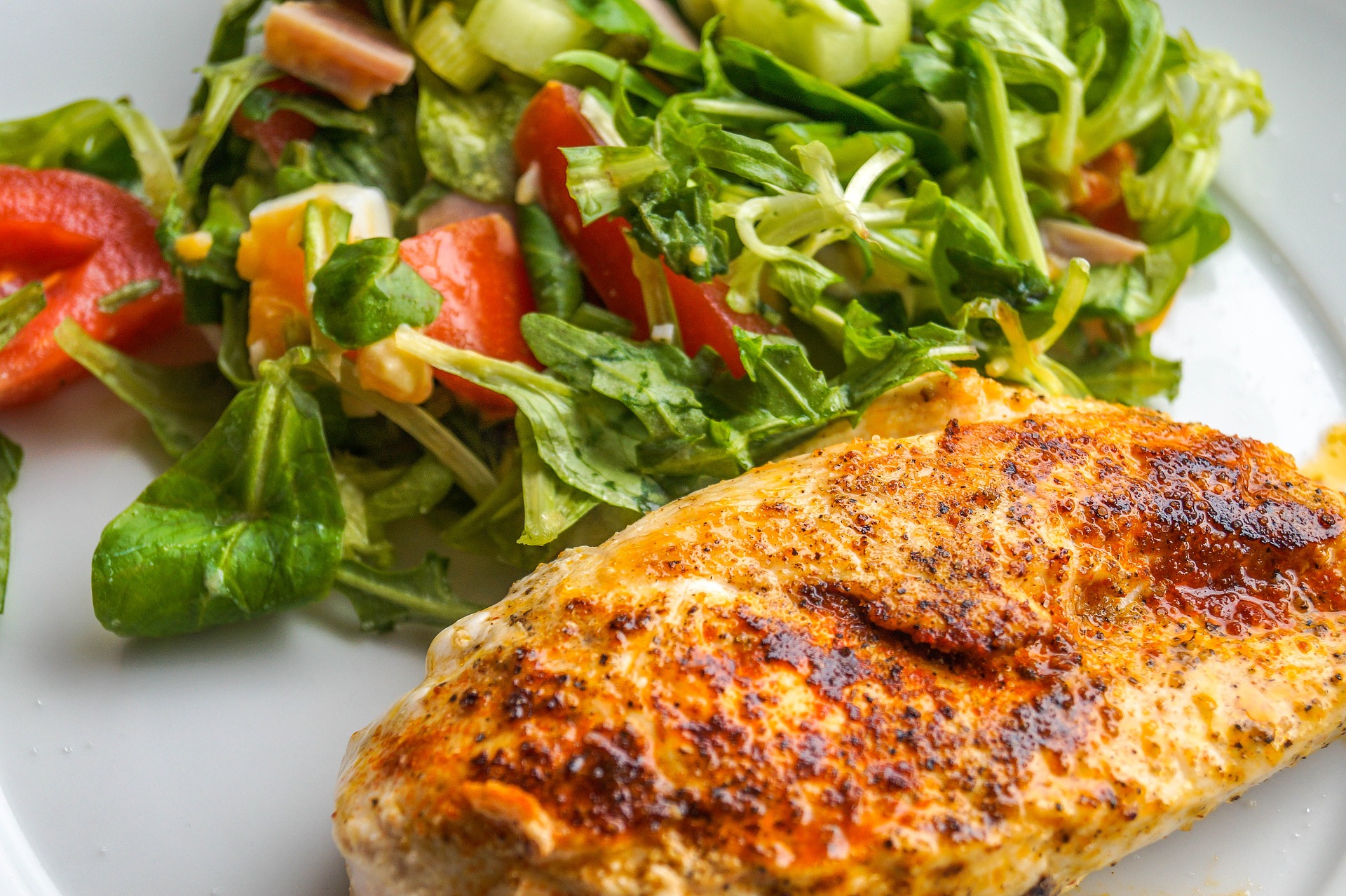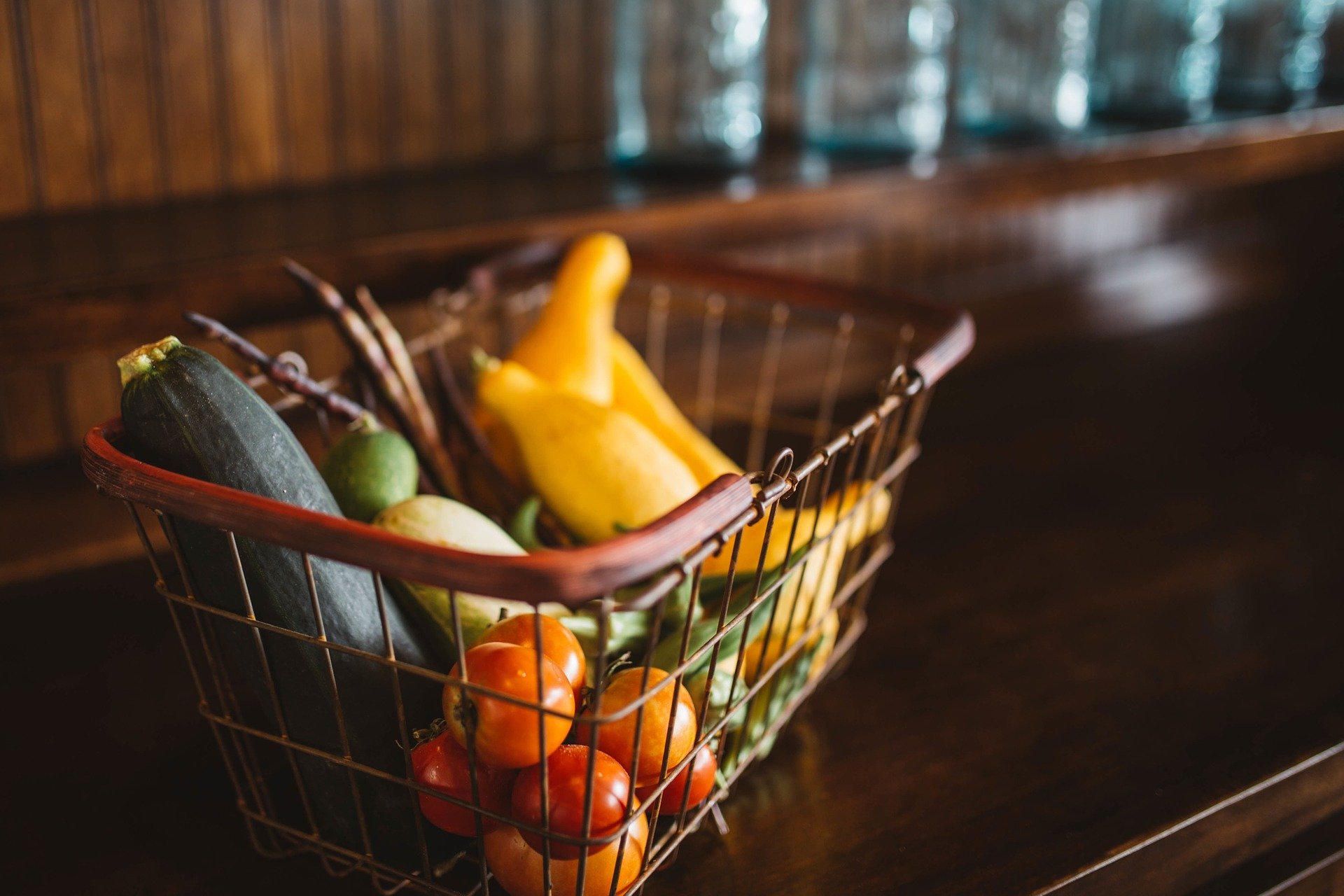Eating healthy on a budget can be challenging, but there are cheap foods out there that are also healthy and easy to add to your diet. Below is a list of cheap and healthy foods that are great in any dish. They are basic, versatile ingredients that can be used frequently, and cost £5 or less.
1. Wholewheat/grain foods (53p – £1.50)
Whole grain foods such as pasta, rice, oats, and quinoa, are extremely healthy, and are a good source of carbs so can be used as a starchy component for a meal. There have been several studies that have examined the consumption of wholegrain foods and refined foods (which are usually more expensive), and their relationship between coronary heart disease, and cardiovascular disease. A recent literature review published in the European Journal of Clinical Nutrition found that in at least 5 different studies, positive relationships between eating whole grain foods and a reduction in heart disease risk were recorded, with at least a 20% to 40% reduction in risk for those who ate whole grain food habitually. Other key benefits include reducing the risk of stroke, obesity, and supporting healthy digestion, as well as having strong antioxidant benefits. This is due to the fact that whole grain foods are high in fibre, vitamins, minerals, protein, and plant compounds such as polyphenols (1).
2. Herbs and Spices (15p – £1.25)
Herbs and spices are cheap and add a tasty flavour to food and are a MUST in healthy eating! Over the past decade, research has reported on the diverse range of health properties that herbs and spices possess through studying their bioactive compounds including sulfur-containing compounds, tannins, alkaloids, flavonoids and polyphenols. There is now substantial evidence to suggest that the compounds from herbs and spices provide a wealth of benefits, including containing antioxidant, anti-inflammatory, anti-tumorigenic, anti-carcinogenic, glucose and cholesterol lowering properties, as well as contain properties that affect thinking and mood.
The spices listed below have been proven to promote health:
- Cinnamon: Contains a compound called cinnamaldehyde which helps fight bacterial and fungal infections (2), repair tissue damage, lower cholesterol and triglycerides in the blood preventing, and lower blood sugar levels (3).
- Turmeric: Contains a compound called curcumin which has powerful anti-inflammatory properties that actually match the effectiveness of some anti-inflammatory drugs (4)(5)
- Cayenne Pepper: Capsaicin is the active ingredient in this spice. Studies have shown a link between capsaicin and reducing appetite and increased fat burning (6).
- Fenugreek: Known to improve blood sugar control, and may help protect the liver against changes caused by chronic alcohol consumption. (7).
- Peppermint: Helps fight nausea (8), boosts mood, and improve pain management in IBS (9).
- Oregano: Boosts heart health and fights infections (10).
- Rosemary: Boosts mood, improves brain function, and promotes hair growth
- Black pepper: contains piperine, which has powerful antioxidants that help with digestion and weight management, and can prevent oxidative damage that leads to disease. Piperine can also help boost mood and improve memory (11).
- Ginger: Has antioxidant and anti inflammatory effects, helps lower blood pressure and lowers fat levels/cholesterol in the blood, and enhances joint and muscle health (12).
3. Eggs (70p – £3)
Eggs are high in protein, which is important as proteins are the main building blocks of the body, and are used to make all sorts of tissues and molecules for both structural and functional purposes. Similarly, eggs also are rich in essential amino acids – one of them being leucine, which is known to help stimulate the production of energy in the cells, and increase the breakdown of fat (13). Although eggs are high in cholesterol, they are relatively low in energy and rich in vitamins and minerals such as biotin, folate, phosphorus, selenium, vitamin A, and iodine. A review published in the American Journal of Nutrition suggested that due to its varied nutritional profile, regular consumption of eggs is linked to better diet quality (14).
Additionally, eggs are also incredibly filling! Because of this, they may reduce calorie intake throughout the day, thus promoting weight loss.
4. Seasoned Fruits and Vegetables (or frozen) (50p – £2)
Fruits and vegetables are an abundant source of some essential vitamins, minerals, fibre, and phytochemicals that may benefit health. These naturally occurring compounds found in plants have protective properties, and the power to reduce the risk of chronic diseases such as cancer, cardiovascular disease, diabetes, eye diseases, and some cognitive disorders (15).
With that said eating seasonally could definitely save you money! When fruits and vegetables are out of season, they either have to be grown in managed conditions or transported from another side of the world. These processes cost money, and that cost gets passed on to you – the consumer. Eating seasonally is much more affordable as local produce can be grown in natural conditions and easily transported to the point of sale. Furthermore, as seasonal produce is produced locally, it has less of a chance of spoiling on the way to you. Food that has travelled at a shorter distance has an enhanced taste, and the nutritional value is still in-tact when it eventually gets to you.
If you’re not a fan of fresh seasoned produce, you could also opt for frozen fruit and veg. Quick-frozen produce is usually just as nutritious as non-frozen produce. This is because they are usually frozen immediately after they are picked/grown. They are cheaper, you can get much more inside the bag, and you can also enjoy out of season produce this way as it hasn’t been exposed to the elements whilst in transport.
5. Bananas (13p – 69p)
Bananas are an ideal energy booster when feeling tired and sluggish. This is because bananas contain a good amount of potassium, which aids in delivering oxygen to the brain, helps maintain a regular heartbeat, and helps maintain a proper balance of water in the body (16).
The great thing about eating bananas is that they are so versatile! You can enjoy them raw, cooked, or frozen or enjoy them with other high energy foods such as peanut butter.
6. Onions and Garlic (16p – £1.20)
Onions and garlic are nutritional powerhouses as they are loaded with antioxidants and antibacterial properties, and are highly nutritious but low in calories (17). Garlic has sulfur containing compounds such as allium that has potent medicinal properties (18), whilst onions are rich in the flavonoid quercetin as well as vitamin C, vitamin B6, potassium and folate which have strong antioxidant and anti-inflammatory properties.
Numerous clinical and epidemiological studies have shown a strong correlation between eating garlic on a regular basis and boosted immunity, reduction of blood pressure and cholesterol, as well as a lowered risk of arteriosclerosis and cancer. In the same vein, onions have been proven to regulate blood sugar (19). Healthy blood sugar levels are associated with maintaining a healthy weight, and a reduced risk of inflammation within the body that leads to illnesses.
Both garlic and onions contain inulin, which is a powerful prebiotic. Prebiotics are essential for health as they promote the growth of good bacteria in the gut, and prevents disease promoting bacteria from growing. With that said, onions and garlic are definitely two of the most healthy foods to eat.
7. Pulses (55p – £1.80)
Pulses are a significant source of protein, fibre, and minerals such as magnesium, iron, zinc, and folate. They also count towards your 5 a day of fruit and vegetables. These include;
- Baked beans
- Red, green, yellow and brown lentils
- Chickpeas (chana or garbanzo beans)
- Garden Peas
- Black-eyed peas
- Broad beans
- Kidney beans
- Butter beans (Lima beans)
- Haricot beans
- Cannellini beans
- Pinto beans
- Edamame beans
In addition, the phytochemicals, saponins, and tannins found in pulses possess antioxidant and anti-carcinogenic effects. The high fibre and low glycaemic index in pulses make them particularly beneficial in maintaining healthy blood glucose and insulin levels (20).
8. Tomatoes (55p – £2)
Tomatoes are a very versatile ingredient that is low in calories and packed with vitamin C and carotenoids which protect your skin from sun damage and wrinkling. They also contain potassium (key for blood pressure control), folate (for healthy tissue growth), vitamin K (for the blood), and fibre (for digestion) (21).
You can make stews and soups with the tinned version, or add fresh tomatoes into salads – both of which are cheap and inexpensive ways to enjoy them.
9. Canned Tuna (£3.50 – £5)
Canned Tuna can often be used as a filling, a topping, or for more substantial meals such as a tuna bake. It is a very useful ingredient as it is a good source of lean protein, and is very beneficial for boosting the immune system, increasing energy, preventing skin damage, and reducing inflammation (22).
10. Chicken Breast Fillets (£5 >)

Chicken breast is a good source of protein and is quite low in fat, making it a great choice as a lean protein. It is particularly low in saturated fat compared to red meats or other cuts of chicken. This is extremely beneficial as saturated fats increase cholesterol, which can cause plaque build-up in your arteries. A large amount of saturated fat in the arteries can cause heart disease and stroke. Choosing lean protein such as chicken breast reduces this risk.
For people who eat meat, consuming chicken breast is a way to meet some of your body’s protein needs without also consuming a lot of fat. The high protein content in chicken breast also makes it perfect for those on a weight loss journey, as consuming adequate amounts of protein during a meal can make you feel fuller for longer. This, in turn, leads to less snacking.
Having sufficient amounts of protein in your diet ensures you build and retain lean muscle mass. This is important for those who want to gain muscle or retain their muscle mass as the amount of muscle in your body influences your metabolism. If you are trying to losing weight, maintaining muscle mass during weight loss prevents a decrease in your metabolism as you lose weight.
Chicken breast is also a very good source of selenium, phosphorus, vitamin B6, and niacin.
Where to shop

In regards to shopping for food, I highly recommend Amazon Fresh. I have found this to be incredibly convenient when grocery shopping as it is cheap, efficient, you can get the same branded items from top brands at a cheaper price, and they specialise in same-day delivery.
If online shopping isn’t your thing, I have formulated a shopping tool containing food prices for all the high street Supermarkets. You can use this to compare prices and save, plan your shopping trips effectively, and get more value for money when you shop.
You can purchase the shopping tool here
The Takeaway

Having a healthy diet doesn’t have to be expensive. There are a range of affordable, nutrient-dense foods you can purchase without breaking the bank. The foods listed above are both cheap and healthy, and a great addition to any diet 🙂
